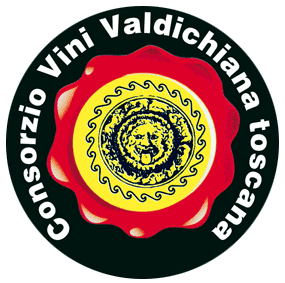Wine making methods
for the production
Planting Order and Yields
The planting order must be of at least 3,300 vine stocks per hectare. The cultivation and pruning systems should be of the general type and must tend towards the enhancement of the characteristics of the vines and corresponding wines.
All artificial growth and yield methods are strictly forbidden.
The maximum permitted yield of grapes per hectare of specialised cultivation for the production of "Tuscan Valdichiana" wines, cannot be more than 11 metric tons for red grapes and 12 metric tons for white grapes. The maximum yield of finished wine ready for consumption, from the grapes must not exceed 70% for the Bianco or Bianco Vergine, Chardonnay, Grechetto, Red, Rosé and Sangiovese varieties. The yield of the Vin Santo variety for finished wine in the third year of ageing in correspondence to the fresh grapes must be a maximum of 35%.
Wine Making Methods for the Production of the Vin Santo Varieties
After careful selection, the grapes are left to de-hydrate and cannot be pressed before December 1st of the vintage year or no later than March 31st of the year following the vintage. The de-hydration process must be carried out in appropriate premises until the sugar content reaches a value of no less than 26%. Partial de-hydration with mechanical means is acceptable. Fermentation and maturing must be effected in wooden barrels with a maximum capacity of 500 litres for a period of at least 2 years.
Commercialisation
The "Valdichiana toscana" Controlled Denomination of Origin wines cannot be sold for consumption before January 31st of the year following that of the vintage, except for "Vin Santo". This type cannot be consumed before November 1st of the third year following its vintage, while the "reserve" denomination of the same wine cannot be consumed before November 1st of the fourth year following its vintage.


